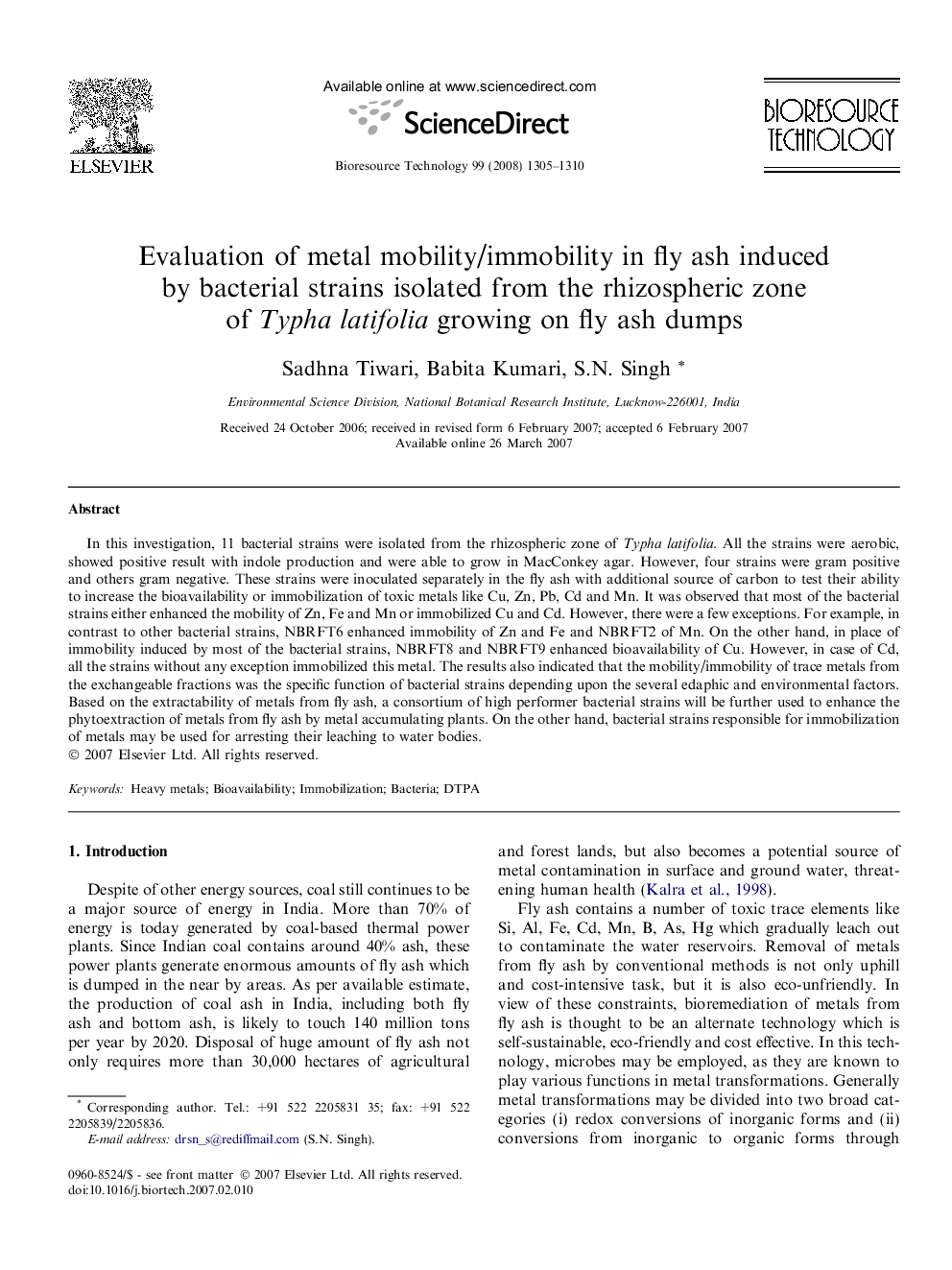| Article ID | Journal | Published Year | Pages | File Type |
|---|---|---|---|---|
| 685414 | Bioresource Technology | 2008 | 6 Pages |
In this investigation, 11 bacterial strains were isolated from the rhizospheric zone of Typha latifolia. All the strains were aerobic, showed positive result with indole production and were able to grow in MacConkey agar. However, four strains were gram positive and others gram negative. These strains were inoculated separately in the fly ash with additional source of carbon to test their ability to increase the bioavailability or immobilization of toxic metals like Cu, Zn, Pb, Cd and Mn. It was observed that most of the bacterial strains either enhanced the mobility of Zn, Fe and Mn or immobilized Cu and Cd. However, there were a few exceptions. For example, in contrast to other bacterial strains, NBRFT6 enhanced immobility of Zn and Fe and NBRFT2 of Mn. On the other hand, in place of immobility induced by most of the bacterial strains, NBRFT8 and NBRFT9 enhanced bioavailability of Cu. However, in case of Cd, all the strains without any exception immobilized this metal. The results also indicated that the mobility/immobility of trace metals from the exchangeable fractions was the specific function of bacterial strains depending upon the several edaphic and environmental factors. Based on the extractability of metals from fly ash, a consortium of high performer bacterial strains will be further used to enhance the phytoextraction of metals from fly ash by metal accumulating plants. On the other hand, bacterial strains responsible for immobilization of metals may be used for arresting their leaching to water bodies.
